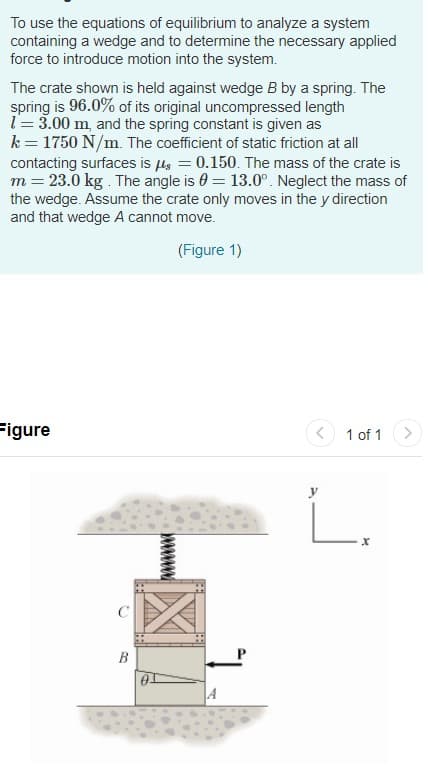To use the equations of equilibrium to analyze a system containing a wedge and to determine the necessary applied force to introduce motion into the system. The crate shown is held against wedge B by a spring. The spring is 96.0% of its original uncompressed length l= 3.00 m, and the spring constant is given as k = 1750 N/m. The coefficient of static friction at all contacting surfaces is 4, = 0.150. The mass of the crate is m = 23.0 kg. The angle is 0 = 13.0°. Neglect the mass of the wedge. Assume the crate only moves in the y direction and that wedge A cannot move. (Figure 1) Figure < 1 of 1> B
Simple harmonic motion
Simple harmonic motion is a type of periodic motion in which an object undergoes oscillatory motion. The restoring force exerted by the object exhibiting SHM is proportional to the displacement from the equilibrium position. The force is directed towards the mean position. We see many examples of SHM around us, common ones are the motion of a pendulum, spring and vibration of strings in musical instruments, and so on.
Simple Pendulum
A simple pendulum comprises a heavy mass (called bob) attached to one end of the weightless and flexible string.
Oscillation
In Physics, oscillation means a repetitive motion that happens in a variation with respect to time. There is usually a central value, where the object would be at rest. Additionally, there are two or more positions between which the repetitive motion takes place. In mathematics, oscillations can also be described as vibrations. The most common examples of oscillation that is seen in daily lives include the alternating current (AC) or the motion of a moving pendulum.


Trending now
This is a popular solution!
Step by step
Solved in 2 steps


